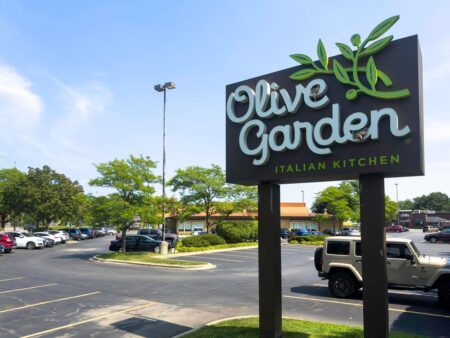Tariffs, inflation, and wary consumers have deflated the U.S. home furnishings business, but IKEA sees an opportunity to outflank the competition.
Everyone knows what business IKEA is in, right? Furniture—sofas, chairs, and beds. So it must compete with Ashley Furniture and Wayfair, the online furniture retailer. But IKEA also sells bedding, rugs, and kitchenware. So TJX (HomeGoods and Marshalls), Target, and Williams Sonoma? What about the Swedish company’s popular kitchen cabinets and appliances? Home Depot and Lowe’s?
Trying to pigeonhole IKEA in a defined retail category in order to compare it to competitors is a slippery business. That should make some or maybe all of those competitors a little nervous as the Swedish company revs up a combined investment of more than $5 billion in updating existing stores and expanding its U.S. fleet of 51 by eight more this year alone.
So says Neil Saunders, a retail analyst with GlobalData, in recent comments reported by industry news site RetailDive.com. “As the largest furniture retailer in the world, IKEA has economies of scale and volumes that allow it to offer value that few others can match. The expansion is a potential threat to many mass market players.”
As it celebrates the 40th anniversary of the opening of its first U.S. store in suburban Philadelphia in 1985, IKEA, with 484 stores in 63 global markets, is in the early stages of an ambitious transformation. The company is known for its destination warehouse stores, sited in sprawling suburban shopping zones, where it is common for customers to spend an hour or two drifting through eye-glazing galleries of stylish, inexpensive merchandise.
In its first decades in the U.S., these megastores served mostly major metropolitan markets and shoppers made an afternoon browsing and a stop in the store cafeteria for a plate of Swedish meatballs or sticky buns.
Now IKEA is adding new small-format stores in urban neighborhoods in places like Dallas, Texas, that are sited closer to the company’s prime demographic and bring “a more connected and accessible IKEA experience to everyone.” The new stores feature a smaller assortment of products, serve as click-and-collect locations, and as “plan and order points” for remodelers.
Like its industry brethren, IKEA boomed at the beginning of the pandemic as quarantines and work-from-home arrangements encouraged home interior makeovers. The boom has been followed by a pullback in consumer spending in the category. Wayfair, for example, posted a 14% decline in sales between 2021 and 2024.
To blunt the impact of inflation, IKEA did something that might not have been possible had the company been publicly-held. It reduced its prices across the board to maintain the brand’s reputation for affordability. As a result, IKEA’s U.S. retail sales for its most recent year, ended August 31, 2024, were $5.65 billion, a slight decrease from the year before. Annual global sales were about $50 billion. (IKEA is officially a not-for-profit corporation governed by the descendants of the founder, who was a teenager when he started the business in 1943 selling pencils and wallets.)
There isn’t much about the company that looks like any other retailer. All of the goods its sells bear the IKEA brand. Many of its most popular items, like its famous BILLY line of bookshelves, contain wood harvested from forests the company owns, and are manufactured in its own factories located in Sweden, Eastern Europe and elsewhere.
The company has a program, “Buy back & resell,” that encourages customers to recycle their used furniture for store credit rather than throwing it away.
Among the many aspects that appeal to shoppers besides stylish design (akin to fast fashion) and affordability is that its furniture is packed in flat boxes and needs to be assembled. Social scientists have discovered that do-it-yourself adds value to purchases, a phenomenon dubbed “the IKEA effect.” It turns out that consumers have more positive feelings about, and place a higher value on, objects they’ve put some effort into.
The current expansion of IKEA is the company’s “next leap,” according to UK CEO Peter Jelkeby. In an interview with City AM, a British business news service, Jelkeby said the company sees growth in the categories of kitchen, wardrobe, and bedrooms as more people rent rather than buy their homes. That means smaller spaces that require more efficient ways to store things. At IKEA, he said, “we are champions of small spaces.”
Read the full article here











